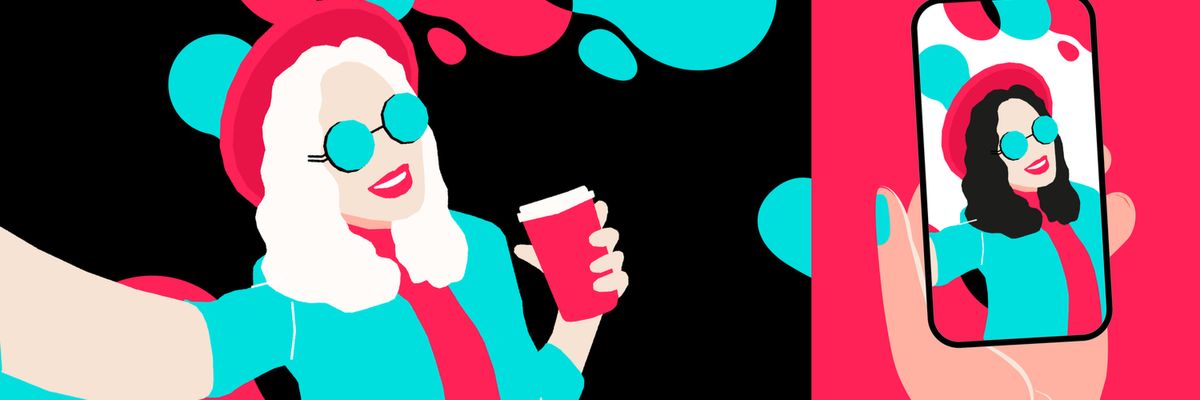But what is the magic behind TikTok slowly becoming the number one income source of Gen Z? What makes teens and brands so fond of using this platform for their marketing purposes?
Let’s get behind the mystery of the crazy rich teens on TikTok.
The formula behind TikTok’s rich teens
Charli D’Amelio, Addison Rae, Loren Grey – teens that became rich overnight are the hottest topic in the social media and influencer world. In 2020, Forbes covered the most successful influencers’ salaries, estimating that Addison Rae earned about $5M with TikTok. Charli, the second highest-earning TikTok star, made around $4M from 2019 to 2020, and Loren roughly $2.6M in only a year.
What seems like the work of a magician, becoming a millionaire on TikTok, is simply part of a long-term trend forming on the platform. More and more young teens and Gen Z-ers are using the platform to generate a side income. They sell products, collaborate with brands, or give helpful lifestyle tips to their followers. Furthermore, with the growing interest of brands and platforms like Shopify to purchase directly from the application, TikTok is slowly transforming itself into the number one go-to social media platform for creators.
While some fear that the TikTok bubble may soon burst, its nature will ensure that it is not just a fad, but becoming the next great digital marketplace of the world’s youngest generation.
TikTok influencers’ popularity with brands and sponsors
Back in 2014, TikTok was still called Musical.ly, a lip-sync video platform, and most of its users were super young teens. Young teenagers built their audience on this app, and when the app launched as TikTok, they already understood how to exploit the algorithm.
Today, more than 41% of the platform’s users are between 16 and 24. The demographic of the audience is what makes TikTok particularly attractive as a marketing tool. Where else can brands reach a pure Gen Z audience?
Dunkin’ Donuts is one of the most prominent brand examples of leveraging the power of Gen Z influencers. The coffee and donut shop partnered with 17-year-old Charli D’Amelio, to enhance brand recognition and sales amongst her younger audience. Fans of Charli D’Amelio would get a drink called “The Charli” at America’s go-to coffee shop for some time.
Invisalign uses the same strategy. The orthodontics company reported a 35% boom in sales, driven by social media influencers on TikTok. In the end, they are simply advertising their products for the age group naturally most interested in correcting their crooked teeth and earn remarkable profit.
Brands like Dunkin’ Donuts and Invisalign have understood the four fundamentals of TikTok:
1. An algorithm allowing users to go viral within hours with engaging content
2. Gen Z is the biggest user group and will move the world economy forward
3. The power of video content for marketing and self-marketing,
4. Growing digital eCommerce possibilities
How influencers can leverage TikTok as a self-marketing tool
The great thing about TikTok is that there is not just one way to gain loyal followers.
First, users can use sponsorships and brand deals to generate income. As the TikTok algorithm evaluates engagement, companies can benefit immensely from investing plenty of small budgets in micro-influencers. Brands like HiSmileTeeth and NerdyNuts transformed themselves from petite companies into million-dollar businesses by trusting the power of micro-influencer marketing.
Furthermore, some influencers convert their followers into paying customers by selling merchandise to them. Examples are teens with their beauty product line, jewellery shop, or tips on which books to read. The collaboration between TikTok and Shopify will empower content creators to monetize their content even further.
The platform also serves as a marketing channel for premium service descriptions behind a paywall on other platforms like Patreon. It allows anyone to sell their content behind a paywall, such as creating videos, music artist performances, or tips on developing games. Many influencers use TikTok to get attention and followers on Patreon.
Influencers can further use TikTok to generate buzz for their primary sources of income. For example, many Twitch users attract followers on TikTok, telling them to join their gaming streams. Lastly, TikTok allows users to send direct rewards if they like the content.
Making money on TikTok as a content creator
TikTok is an excellent platform for building a loyal audience. The algorithm encourages individuals to create a community of engaging followers.
The platform strongly relies on active community management. Users mostly reply to content with a video and repost adjusted video content of others in their feed. The more interaction influencers leverage, the higher their engagement rates will be, and the more likely it is to generate attention with brands and sponsors.
Jumping onto TikTok, one should know their target audience and check whether they can provide the content their audience is primarily interested in. Content creators can easily talk about political topics, life hacks, lifestyle products, or even medical advice if they have authenticity in these topics. Still, they need to keep in mind that TikTok content works when it is inspired and creative.
When it comes to brand relationships, one needs to know that brands look for influencers that would be the perfect fit. These fits vary depending on the industry and brand values. Let’s say an influencer wants to target beauty brands. It will be beneficial for this influencer to have a clear line of content, such as supporting natural and cruelty-free products. Only then can they speak with authenticity about these values and attract sponsors.
Lastly, influencers need to price sponsored products well. When setting a price, two factors determine how much creators can charge a brand for sponsored content. First, the industry niche heavily dictates the costs of content collaborations. Particularly among rare finds such as technology and the finance industry, prices can climb quickly.
Secondly, the price depends on the engagement rates of each content piece. Users with loyal audiences and average high engagement rates can charge higher fees. Posting comedy content that resonated well, the user Usim went from charging $150 per TikTok video to $750 after going viral overnight. To understand what various influencers from different industries ask for collaborations, something like an Influencer Price Calculator can help gain insights.
Monetising content creation: a growing trend
It’s neither a coincidence nor a fad that more and more teens start using TikTok as a source to generate income. Even if not everyone has the ambition to become a millionaire, TikTok is one of the most promising social media platforms for monetising content.
Both TikTokers and brands can use the great potential of the platform to generate buzz, taking some tips into account. Firstly, the platform is based on engagement, so it is essential to share content that encourages others to respond to content or promote it in a big way. Secondly, it is crucial to consider the values and interests of Generation Z and share tailored content with this segment group. Finally, it is an excellent strategy to test and see which audience resonates with which type of content and the kind of video they prefer.
Those who use this knowledge to their advantage could soon be among the new wealthiest and most prominent TikTok stars. We wish you good luck on TikTok either way.









